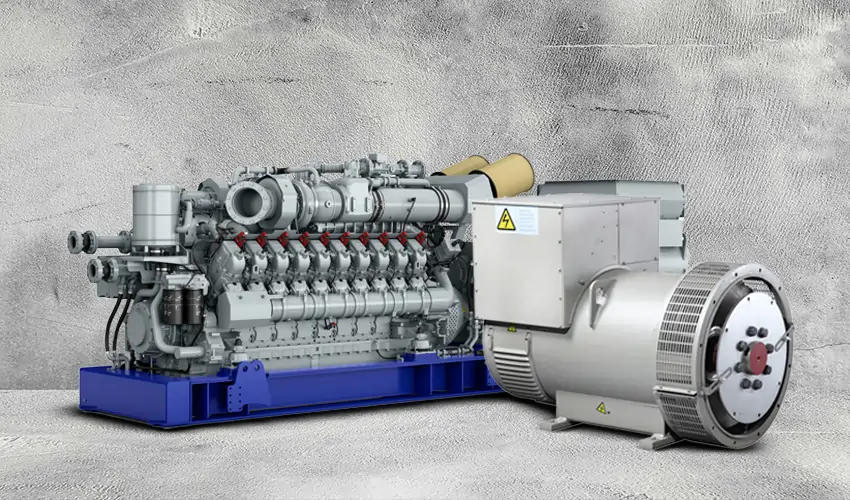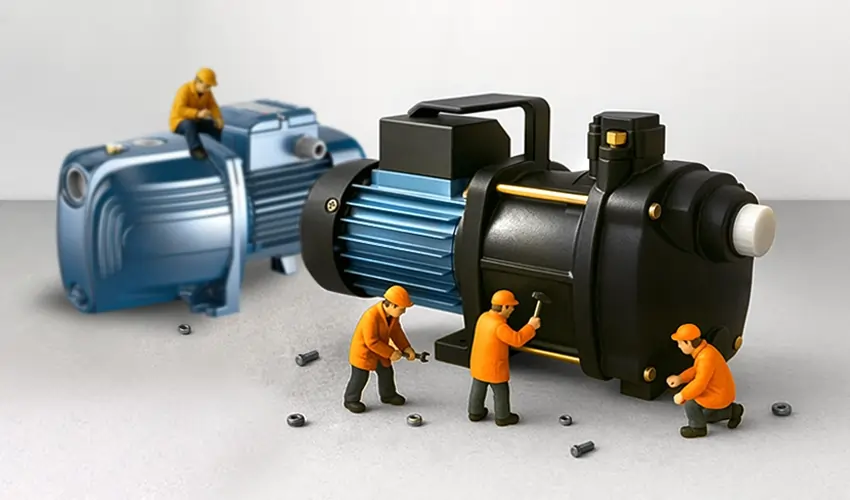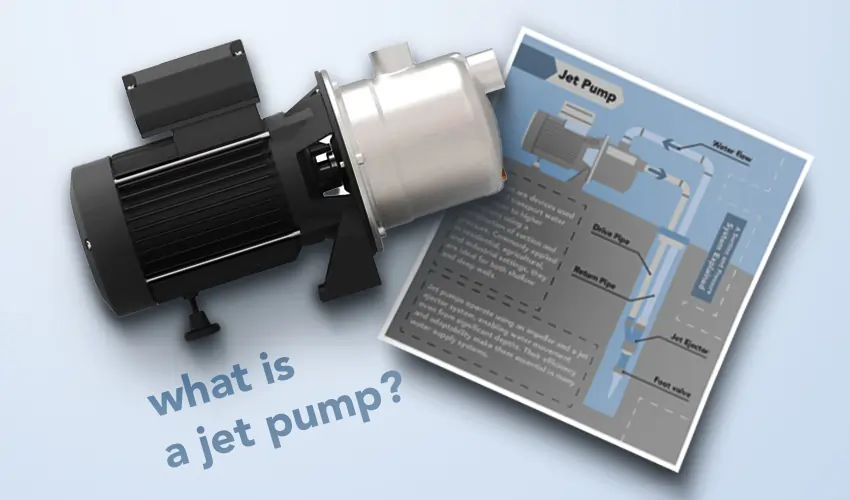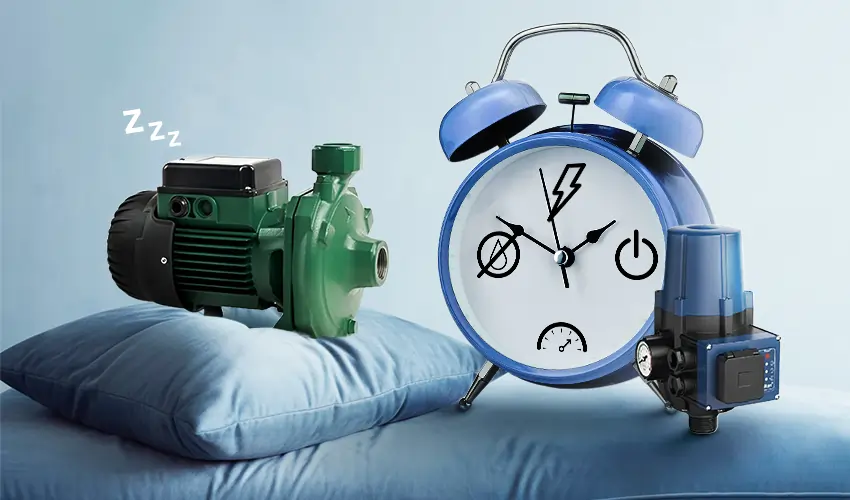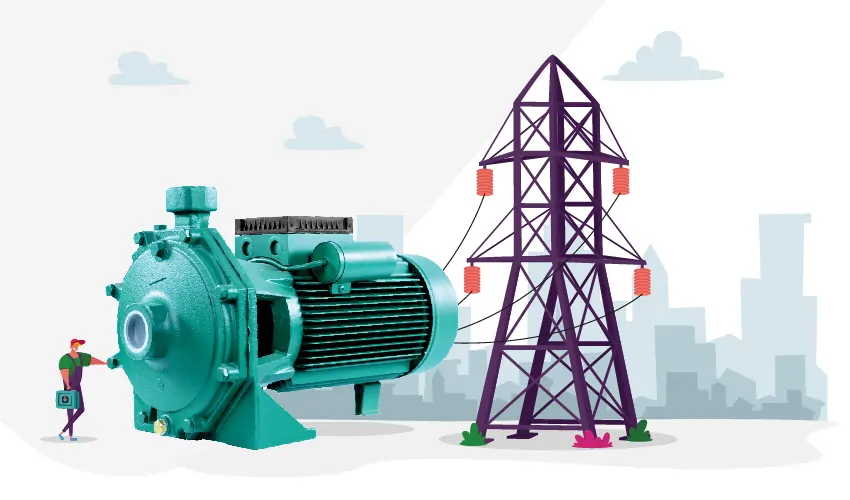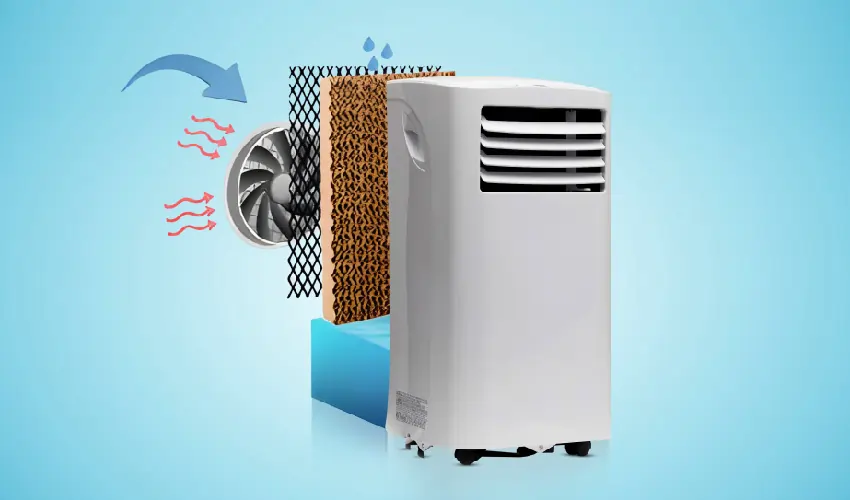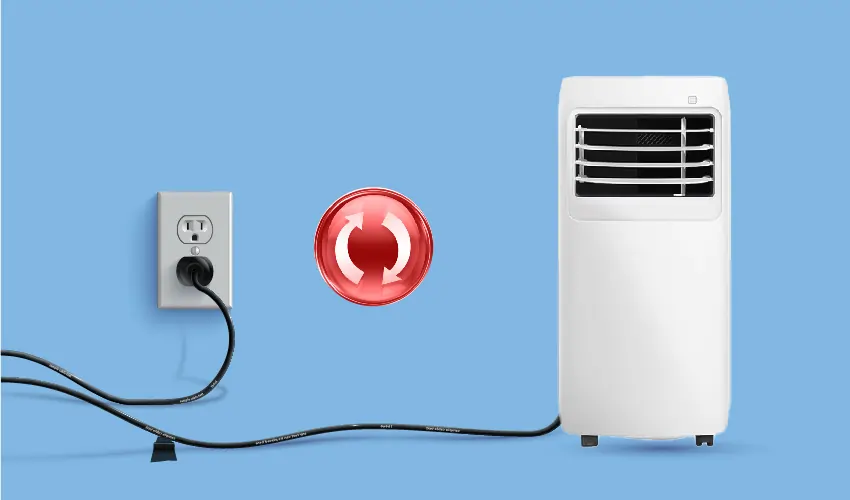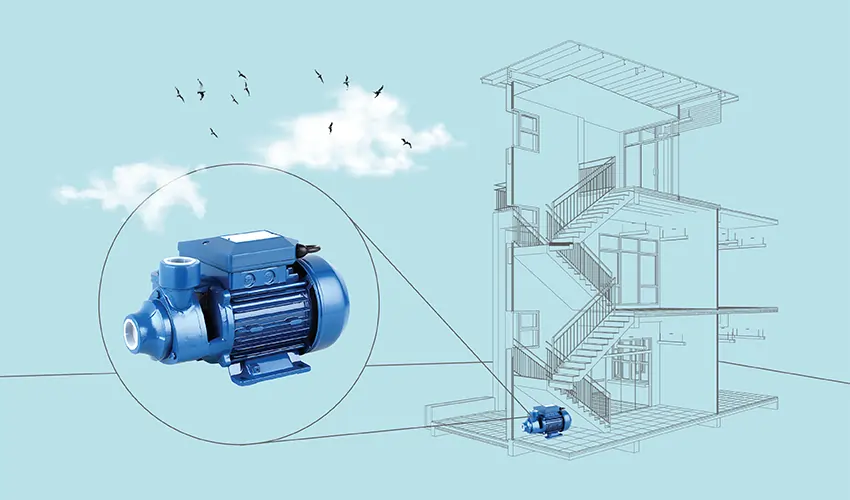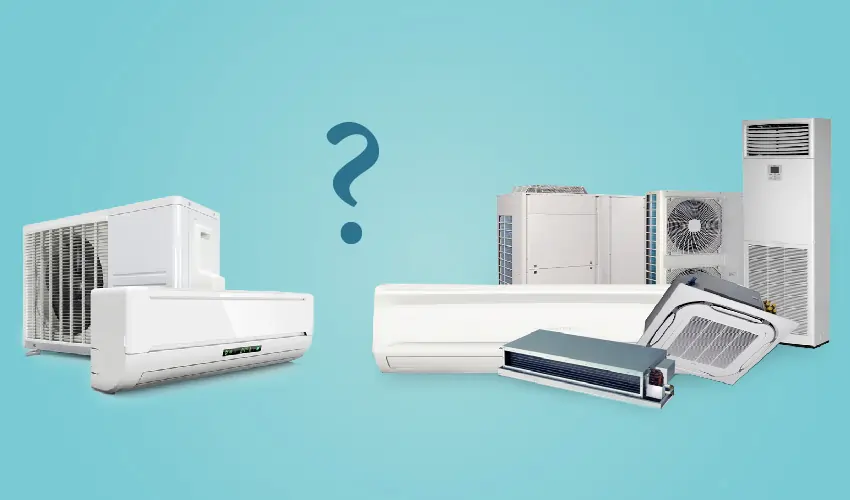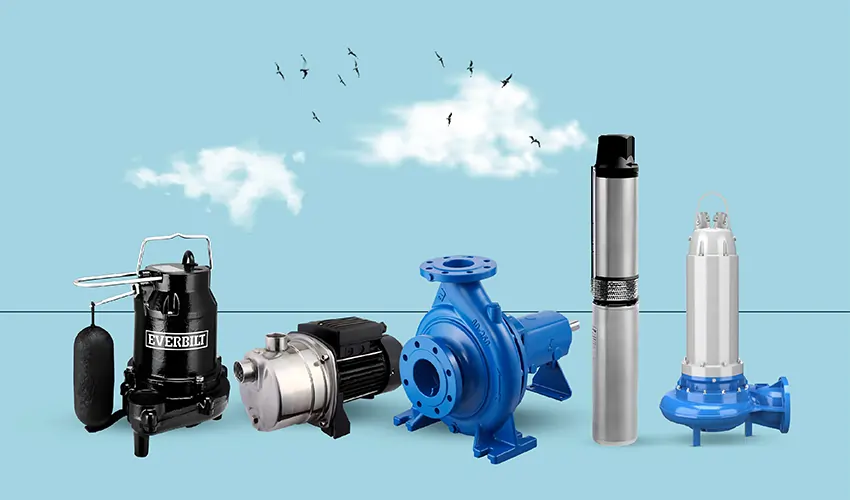Alternators and generators are essential components in electrical systems, providing the means to generate electricity. Though they share the fundamental function of converting mechanical energy into electrical energy, they diverge in their operating mechanisms, voltage outputs, and applications. Understanding the difference between alternators and generators is crucial for selecting the appropriate device for specific power generation needs.
What is an Alternator?
An alternator is a device used in vehicles to generate electricity. It converts mechanical energy into electrical energy. In a vehicle, the alternator is typically belt-driven by the engine. As the engine rotates, it turns the alternator’s rotor, which is surrounded by a stator containing wire coils. This rotation induces an alternating current (AC) in the stator coils through electromagnetic induction.
The AC produced by the alternator is then converted into direct current (DC) by a rectifier system within the alternator. The rectified current is used to charge the vehicle’s battery and power the electrical components and systems, such as lights, ignition systems, and various onboard electronics. Alternators are crucial components of modern vehicles, ensuring a constant supply of electrical power while the engine is running. They are more efficient and reliable compared to older technologies like generators, which were commonly used in earlier vehicle models.
Alternator Functions and Components
The alternator is a key component of a vehicle’s electrical system, responsible for generating electrical power to charge the battery and supply electricity to various components. Its main functions and components include:
Power Generation: The primary function of the alternator is to generate electrical power. It converts mechanical energy from the engine into electrical energy.
Charging the Battery: The alternator continuously charges the vehicle’s battery while the engine is running. This ensures that the battery remains sufficiently charged to start the engine and power electrical components when the engine is off.
Powering Electrical Systems: The electrical power produced by the alternator is used to supply electricity to various components and systems in the vehicle, including lights, ignition systems, audio systems, heating and cooling systems, and onboard electronics.
Voltage Regulation: The alternator regulates the voltage of the electrical system to ensure a consistent and stable supply of electricity. It prevents voltage spikes or drops that could damage electrical components.
Now, let’s look at the key components of an alternator:
Rotor: The rotor is the rotating component of the alternator. It is usually mounted on a shaft and spins inside the stator. The rotor generates a magnetic field when it is rotated, inducing an alternating current (AC) in the stator windings.
Stator: The stator is the stationary component of the alternator. It consists of wire coils wound around an iron core. The alternating current induced in the stator windings is captured and sent to the rectifier system.
Rectifier System: The rectifier system converts the alternating current (AC) produced by the alternator into direct current (DC), which is suitable for charging the battery and powering the vehicle’s electrical systems. It typically consists of diodes arranged in a configuration called a rectifier bridge.
Voltage Regulator: The voltage regulator is a crucial component that controls the output voltage of the alternator. It ensures that the electrical system receives a stable voltage within the desired range. Modern alternators often have built-in voltage regulators, while older designs may use external regulators.
Cooling System: Alternators generate heat during operation, so they are equipped with cooling systems to dissipate heat and prevent overheating. This may include airflow provided by the vehicle’s engine cooling system or dedicated cooling fans.
Bearings and Mounting Brackets: Bearings support the rotor shaft, allowing it to rotate smoothly. Mounting brackets secure the alternator to the engine or vehicle chassis.
What is a Generator?
A generator is a device that converts mechanical energy into electrical energy. It operates on the principle of electromagnetic induction, where a conductor moving through a magnetic field generates an electric current. Unlike an alternator, which produces alternating current (AC), a generator can produce either AC or direct current (DC), depending on its design.
Generators are used in various applications to provide electricity when there is no access to a power grid or as a backup power source in case of power outages. They are commonly used in residential, commercial, and industrial settings, as well as in construction sites, camping trips, and other outdoor activities.
Generator Working Principle
The working principle of a generator is based on electromagnetic induction, a fundamental concept in physics discovered by Michael Faraday in the early 19th century. Electromagnetic induction occurs when a conductor (such as a wire) moves through a magnetic field, inducing an electric current in the conductor. This principle forms the basis for the operation of generators.
Here’s a simplified explanation of how a generator works:
Magnetic Field: A generator has a magnetic field, typically generated by a permanent magnet or an electromagnet. This magnetic field is usually stationary.
Conductor: Inside the generator, there is a conductor, often in the form of wire coils, which can move relative to the magnetic field.
Motion: To generate electricity, the conductor needs to move within the magnetic field. This motion can be achieved in various ways depending on the type of generator. For example, in a turbine-driven generator, such as those used in power plants, the motion is created by rotating turbines driven by steam, water, or wind. In a hand-cranked generator, manual rotation of a handle causes the conductor to move.
Electromagnetic Induction: As the conductor moves through the magnetic field, it cuts through the lines of magnetic flux. According to Faraday’s law of electromagnetic induction, this relative motion between the conductor and the magnetic field induces a voltage, or electromotive force (EMF), across the ends of the conductor.
Generation of Electricity: The induced voltage causes an electric current to flow through the conductor if the circuit is closed. This current represents the electrical energy generated by the generator.
Conversion: In alternating current (AC) generators, the direction of the induced current changes periodically as the conductor moves back and forth within the magnetic field. This results in an alternating voltage and current. In direct current (DC) generators, devices such as commutators are used to convert the alternating current produced by electromagnetic induction into direct current.
Output: The generated electricity can be used to power electrical loads connected to the generator, stored in batteries, or transmitted over power lines to consumers.
Applications of Generators
Generators have a wide range of applications across various industries and settings. Some of the common applications of generators include:
Emergency Power Backup: Generators are commonly used as backup power sources in residential, commercial, and industrial settings to provide electricity during power outages. They ensure continuous operation of critical systems such as lighting, refrigeration, heating and cooling, medical equipment, communication systems, and security systems.
Construction Sites: Generators are essential on construction sites where access to the power grid may be limited or unavailable. They power tools and equipment such as drills, saws, compressors, and welders, enabling construction projects to proceed efficiently.
Outdoor Events: Generators are often used to provide power for outdoor events such as concerts, festivals, sporting events, and fairs. They power sound systems, lighting, food vendors, ticket booths, and other infrastructure necessary for the event.
Remote Locations: In remote or off-grid locations where access to electricity from the grid is impractical or costly, generators are used to provide power for residential, commercial, and industrial purposes. This includes remote cabins, telecommunications towers, mining operations, and agricultural facilities.
Recreational Vehicles (RVs) and Boats: Generators are installed in RVs, campers, and boats to provide electricity for appliances, air conditioning, lighting, entertainment systems, and other onboard amenities while away from shore power or stationary campsites.
Data Centers: Data centers and server rooms require uninterrupted power to maintain critical operations. Generators are used as backup power sources to ensure continuous operation of servers, networking equipment, and cooling systems in the event of a power outage.
Hospitals and Healthcare Facilities: Hospitals and healthcare facilities rely on generators to provide backup power for life-saving medical equipment, lighting, HVAC systems, and other essential services during power outages or emergencies.
Telecommunications Infrastructure: Telecommunications networks, including cell towers and communication hubs, use generators to maintain continuous operation of equipment and ensure uninterrupted service during power disruptions.
Military and Defense Applications: Generators are used in military and defense applications to provide power for field operations, command centers, communication systems, radar systems, and other critical equipment in remote or hostile environments.
Industrial Processes: Generators are employed in various industrial processes, such as manufacturing, mining, oil and gas operations, and agriculture, to power machinery, pumps, conveyors, and other equipment required for production.
Key Differences Between Alternator & Generator
Alternators and generators are both devices used to generate electricity, but they operate on different principles and have distinct characteristics. Here are the key difference between generator and alternator:
Operating Principle
Alternator: Alternators generate alternating current (AC) electricity through electromagnetic induction. They use a stationary magnetic field and a rotating conductor (usually a rotor) to induce an alternating voltage in stationary windings (stator).
Generator: Generators can produce either alternating current (AC) or direct current (DC) electricity. They also operate on electromagnetic induction, but the specific design can vary. In AC generators, the magnetic field and conductor may rotate together, or the magnetic field may be rotated around the stationary conductor. In DC generators, a commutator is used to convert the alternating voltage produced by electromagnetic induction into direct current.
Output Voltage
Alternator: Alternators typically produce AC voltage, which can be easily converted to different voltages using transformers.
Generator: Depending on the design, generators can produce either AC or DC voltage. Some generators produce AC voltage directly, while others produce AC voltage that is rectified to DC using a commutator or rectifier system.
Voltage Regulation: Alternator: Alternators usually have built-in voltage regulators to maintain a constant output voltage. These voltage regulators adjust the strength of the magnetic field to control the output voltage.
Generator: Voltage regulation in generators may be achieved using various methods, such as manually adjusting engine speed (for smaller generators) or using external voltage regulators.
Applications: Alternator: Alternators are commonly used in vehicles to charge batteries and power electrical systems. They are also used in power plants to generate electricity on a larger scale.
Generator: Generators have a wide range of applications, including backup power generation for buildings, construction sites, outdoor events, recreational vehicles, and remote locations. They are also used in industrial processes, telecommunications, and military applications.
Efficiency and Size: Alternator: Alternators are generally more efficient and compact than generators. They are commonly used in vehicles because of their smaller size, higher efficiency, and ability to produce AC voltage directly.
Generator: Generators may be larger and less efficient than alternators, especially in applications where size and weight are not critical factors. However, they offer versatility in producing both AC and DC voltage.
Conclusion
In summary, if you want to buy generator or alternator, you should know while both alternators and generators are used to generate electricity, they differ in their operating principles, voltage output, and applications. Alternators produce alternating current (AC) voltage, are commonly used in vehicles, and feature built-in voltage regulation. Generators can produce either AC or direct current (DC) voltage, have broader applications, and may require external voltage regulation.

